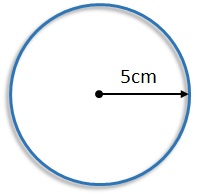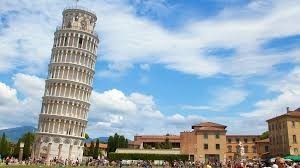This learning progression is designed for a high school Applied Geometry course in which the students have access to computers. The Common Core State Standards that align with this learning progression are: 7.G.B.4, 7.G.B.6, and 8.G.C.9. The reason that we combined 7th and 8th grade standards is because the students need a chance to review and solidify their understanding of the basics of area and volume but also be challenged by having to find real-world applications. The students will also be assessed on the following standards of mathematical practice: MP4; model with mathematics, MP6; attend to precision, and MP7; look for and make use of structure.
The unit will begin with a discovery based lesson about pi. The students will be required to partner up and measure the circumference and diameter of two different objects. Each partner will be assigned different circular objects. There will be a master list at the front of the room that the students can record their measurements on and then write what the circumference/diameter of their objects was. The purpose of this lesson is to show the students that, no matter what the size of the circle, if they take the circumference/diameter of their object they will get approximately 3.14, or pi. By realizing this pattern, the students are looking for and making use of structure (MP7). The students will also be required to graph the data, with the circumference of the objects being represented on the y-axis and the diameter on the x-axis. This will create a relatively linear line. The students will then be asked to identify the slope of this line, which will be 3.14. Finally, the students will be required to answer some questions in order to elicit further evidence of their understanding. Some of the questions that will be asked are:
1. What is the average ratio of circumference to diameter?
2. What observations did you make?
3. Can you derive the formula for circumference of a circle by knowing Pi is the ratio of diameter to circumference?
After the students understand the origin of pi, they will be required to use the concept of pi to find the area of circles. They will also learn how to find the surface area and area of rectangles and triangles and their respective 3-D prisms. Finally, the students will learn what the difference is between surface area and area. They will be asked what real-world applications that are related to area and surface area. In using the equations to correctly calculate volume and surface area, the students are attending to precision (MP6). The students will be formally assessed via a worksheet. Problems on this worksheet include
1. Find the surface area of the origami figure you made in class
3. What do you notice about the shapes of a cylinder when calculating surface area?
Once the students understand how to find the area and surface area of these basic objects, they will move on to finding both surface area and volume of more advanced objects such as pyramids, cones, spheres, triangular prisms, cubes, and cylinders. The students will be provided with a list of the necessary equations to know. The purpose of this lesson is for the students to be able to apply the given formulas and to identify how volume and surface area apply to the real-world. In order to allow the students to practice the equations for finding the volume and surface area of these objects, they will use Google Earth. The students will download the Volume of Solids kmz file from realworldmath.org. They will then follow the directions to virtually travel the world and find the volume and surface area of different buildings in different countries. The program itself will give the necessary dimensions for the equations. By having the students find real-world applications of volume and surface area, they are modeling with mathematics (MP4). The students will record their work and answers on a worksheet that they will be given. One of the questions on the worksheet looks like this:
Leaning Tower of Pisa
Volume:
In order to assess the students ability to connect this lesson to the real world, they will also be asked on their worksheet “In what career would you use volume and surface area? Why do you think that?”. This is an important question since the main purpose of this lesson is to get the students to realize the real-world applications of volume and area.
Learning Progression: LearningProgression
Discovering Pi lesson plan: discovering pi
Area and Surface Area lesson plan: LP Area
Google Earth Volume and Surface Area lesson plan: GeoMath lesson plan

